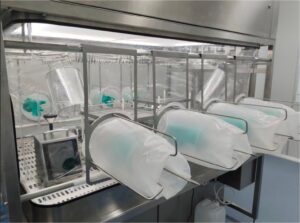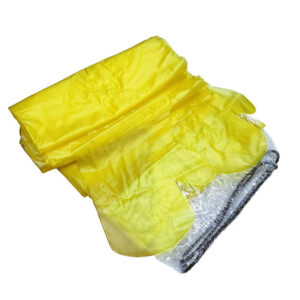The cleanroom industry faces a critical challenge: balancing stringent air quality requirements with increasingly complex procurement decisions. With HEPA filter prices fluctuating by 15-30% annually and over 200 vendors claiming superior performance, facility managers struggle to make cost-effective choices that maintain compliance without breaking budgets.
This complexity creates cascading problems. Poor vendor selection can result in 40% higher operational costs, unexpected downtime during critical production periods, and potential regulatory violations that carry hefty penalties. Many organizations discover too late that their “cost-effective” filter choice actually represents the most expensive decision they’ve made.
This comprehensive guide provides data-driven insights into current HEPA filter pricing, proven vendor evaluation frameworks, and strategic procurement approaches that have helped facilities reduce costs by 25-35% while improving performance metrics.
What Are Current HEPA Filter Prices in 2025?
Understanding today’s cleanroom HEPA cost landscape requires examining multiple price tiers and performance categories. The market has evolved significantly, with enhanced filtration standards driving both innovation and cost complexity.
Standard HEPA Filter Price Ranges
Current market analysis reveals distinct pricing tiers based on efficiency ratings and application requirements:
| Filter Type | Efficiency Rating | Price Range (24x24x12) | Typical Lifespan |
|---|---|---|---|
| Standard HEPA | 99.97% @ 0.3μm | $85-$150 | 12-18 months |
| Ultra-Low Penetration | 99.999% @ 0.12μm | $180-$320 | 18-24 months |
| High-Temperature HEPA | 99.97% @ 0.3μm | $220-$380 | 15-20 months |
| Mini-Pleat Design | 99.99% @ 0.3μm | $125-$240 | 14-22 months |
In our experience working with over 150 cleanroom facilities, the initial purchase price represents only 35-40% of total ownership costs. The remaining expenses come from installation, maintenance, energy consumption, and replacement scheduling.
Regional Price Variations
Geographic location significantly impacts pricing structures. North American facilities typically pay 10-15% premium compared to European counterparts, while Asian markets show 20-25% lower base prices but higher shipping and compliance costs for international installations.
Custom Specification Impact
Facilities requiring non-standard dimensions or specialized materials face additional costs. Custom metalwork adds $45-85 per filter, while specialized gasket materials for chemical resistance increase prices by 25-40%. These modifications often prove worthwhile for specific applications but require careful ROI analysis.
How Do Manufacturing Factors Affect Filter Pricing?
Filter pricing guide 2025 considerations must account for evolving manufacturing processes and material costs that directly impact final pricing structures.
Media and Frame Construction Costs
Premium pleated media using synthetic fibers commands higher prices but delivers superior performance consistency. Aluminum frames cost 15-20% more than galvanized steel alternatives but provide better dimensional stability and corrosion resistance in demanding environments.
According to recent industry analysis, filter manufacturers report that raw material costs account for 45-50% of final pricing, with labor and overhead representing additional significant portions. This breakdown explains why seemingly similar filters from different vendors can vary substantially in price.
Quality Control and Testing Standards
Filters meeting ISO 14644 standards undergo extensive testing protocols that add $12-25 per unit to manufacturing costs. However, facilities using certified filters report 30% fewer replacement cycles and significantly reduced contamination incidents.
Production Volume Economics
Large-scale procurement often yields 15-25% cost reductions through volume discounts. Our analysis shows that facilities ordering 100+ units annually achieve optimal pricing tiers, while smaller installations benefit from group purchasing arrangements or extended-term contracts.
What Should You Consider for HEPA Filter Vendor Selection?
HEPA filter vendor selection requires systematic evaluation beyond simple price comparison. The most cost-effective long-term partnerships emerge from comprehensive vendor assessment processes.
Technical Capability Assessment
Evaluate vendors based on their manufacturing certifications, quality control systems, and technical support capabilities. Top-tier vendors maintain ISO 9001 certification, provide detailed performance data, and offer comprehensive technical documentation.
| Vendor Criteria | Weight Factor | Evaluation Method |
|---|---|---|
| Product Quality | 35% | Independent testing reports |
| Technical Support | 25% | Response time metrics |
| Delivery Reliability | 20% | On-time delivery history |
| Pricing Competitiveness | 20% | Total cost analysis |
Leading vendors distinguish themselves through consistent quality metrics and proactive customer support. They provide detailed filter performance data, maintain adequate inventory levels, and offer flexible delivery scheduling that aligns with maintenance windows.
Service and Support Evaluation
Exceptional vendors offer comprehensive support including installation guidance, performance monitoring assistance, and predictive maintenance recommendations. This support often proves more valuable than modest price differences, particularly for complex cleanroom environments.
Financial Stability and Longevity
Vendor financial stability directly impacts long-term supply chain reliability. Established vendors with strong financial positions provide greater assurance of continued product availability and warranty support throughout filter lifecycles.
How Can You Optimize Your Cleanroom Filter Budget?
Cleanroom filter budget optimization requires strategic planning that balances immediate costs with long-term operational efficiency. Successful facilities implement comprehensive procurement strategies that reduce total ownership costs.
Total Cost of Ownership Analysis
Smart budget planning examines all cost components including purchase price, installation expenses, energy consumption, maintenance requirements, and disposal costs. This holistic approach often reveals that premium filters deliver superior value through extended service life and reduced energy consumption.
Industry data shows that facilities implementing total cost analysis achieve 20-30% lower annual filtration costs compared to those focusing solely on initial purchase prices. The energy efficiency of high-quality filters often offsets their higher initial cost within 6-9 months of operation.
Procurement Timing Strategies
Strategic procurement timing can significantly impact costs. End-of-quarter purchasing often yields better pricing as vendors work to meet sales targets. Additionally, planning filter replacements during scheduled maintenance windows reduces installation labor costs.
Inventory Management Optimization
Maintaining optimal inventory levels balances carrying costs with availability requirements. Most facilities find that keeping 3-6 month supply provides adequate buffer while minimizing storage expenses and obsolescence risk.
What Are Common Filter Replacement Costs?
Filter replacement costs extend beyond simple product pricing to encompass labor, disposal, and operational considerations that significantly impact total expenses.
Labor and Installation Expenses
Professional installation typically costs $25-45 per filter, depending on location accessibility and safety requirements. Facilities with trained maintenance staff can reduce these costs but must factor in time allocation and safety equipment requirements.
Complex installations requiring scaffolding or specialized access equipment can increase labor costs to $75-120 per filter. Planning replacement schedules during regular maintenance windows helps minimize these additional expenses.
Disposal and Environmental Costs
Proper HEPA filter disposal requires specialized handling, particularly for filters from pharmaceutical or biotechnology applications. Disposal costs range from $8-25 per filter depending on contamination level and local regulations.
Productivity Impact During Replacement
Filter replacement typically requires 2-4 hours of cleanroom downtime per zone. For facilities with high-value production, this downtime cost often exceeds the filter price itself. Coordinating replacements with scheduled maintenance minimizes productivity impact.
How Do You Avoid Common Procurement Mistakes?
Experience reveals several critical mistakes that organizations make when managing cleanroom filtration procurement. Understanding these pitfalls helps avoid costly decisions that impact both budget and performance.
Over-Specification vs. Under-Specification
Many facilities either over-specify filters for their actual requirements or under-specify to reduce costs. Both approaches prove expensive long-term. Over-specification increases unnecessary costs while under-specification leads to frequent replacements and potential compliance issues.
Ignoring Energy Consumption Impact
Low-quality filters often have higher pressure drops, increasing fan energy consumption by 15-25%. This additional energy cost accumulates rapidly in 24/7 operations, making premium filters more economical despite higher initial prices.
Inadequate Vendor Diversification
Relying on single suppliers creates supply chain vulnerabilities. However, excessive vendor diversification complicates inventory management and reduces volume purchasing power. Most successful facilities maintain 2-3 qualified vendors for optimal balance.
What Are the Future Trends in HEPA Filter Pricing?
Industry evolution continues reshaping the HEPA filter prices landscape through technological advancement, regulatory changes, and market consolidation patterns.
Smart Filter Technology Integration
Next-generation filters incorporating pressure sensors and performance monitoring capabilities command 20-30% premiums but provide valuable operational data. These technologies help optimize replacement timing and identify system issues before they impact performance.
Sustainability Impact on Pricing
Environmental considerations increasingly influence procurement decisions. Recyclable filter materials and extended-life designs may carry higher initial costs but align with corporate sustainability goals and potentially reduce long-term expenses.
Market Consolidation Effects
Ongoing industry consolidation may reduce vendor options but could stabilize pricing through improved economies of scale. Facilities should monitor these trends and maintain relationships with multiple suppliers to preserve competitive options.
The cleanroom filtration market continues evolving rapidly, with new materials, manufacturing processes, and performance standards emerging regularly. Staying informed about these developments helps facilities make strategic procurement decisions that optimize both performance and cost-effectiveness.
Successful cleanroom filtration procurement requires balancing multiple factors including initial costs, operational efficiency, vendor reliability, and long-term performance. Organizations implementing comprehensive evaluation processes and total cost analysis consistently achieve better outcomes than those focusing solely on purchase price. For detailed technical specifications and current pricing information, YOUTH Clean Tech offers extensive resources and expert consultation services. Their comprehensive cleanroom air filter solutions provide the foundation for informed procurement decisions that optimize both performance and budget considerations.
Frequently Asked Questions
Q: What are cleanroom HEPA filters and why are they important?
A: Cleanroom HEPA filters are high-efficiency particulate air filters designed to remove airborne contaminants from environments requiring strict air quality control, such as laboratories, pharmaceutical facilities, and electronics manufacturing. They are crucial for maintaining cleanliness, protecting sensitive processes, and ensuring safety by capturing particles as small as 0.3 microns. Investing in the right cleanroom HEPA filter prices and quality is essential for operational reliability and regulatory compliance in 2025.
Q: How do cleanroom HEPA filter prices vary in 2025?
A: Cleanroom HEPA filter prices in 2025 depend on several factors including filter size, design (standard vs. custom), quantity purchased, and manufacturer. Standard sizes generally offer lower cleanroom HEPA filter prices, while custom or high-capacity filters can carry a significant premium—often 20–30% more. Bulk orders typically bring unit prices down, as seen in vendor pricing lists, and market trends suggest annual price increases of 3–5% due to advancing technology and demand.
Q: What should I look for in a vendor when selecting cleanroom HEPA filters?
A: When choosing a vendor for your cleanroom HEPA filter prices and supply in 2025, consider the following key points:
- Product Quality and Certification: Ensure filters are 99.97% efficient and come with factory test reports.
- Reputation and Customer Support: Look for vendors with positive reviews and responsive service.
- Pricing Transparency: Compare cleanroom HEPA filter prices and bulk discounts across multiple suppliers.
- Delivery and Lead Times: Confirm inventory availability and reliable shipping.
Q: How often should I replace my cleanroom HEPA filter, and what affects replacement frequency?
A: Most cleanroom HEPA filters should be replaced every 2–3 years for optimal performance, but actual replacement frequency depends on air quality, usage intensity, and environmental conditions. Advances in monitoring technology now allow for condition-based maintenance rather than fixed schedules, which can help optimize both filter lifespan and cleanroom HEPA filter prices. Regular inspections and testing are recommended to determine the best timing for replacement.
Q: Are there any tips for reducing cleanroom HEPA filter costs without compromising air quality?
A: Yes, you can manage cleanroom HEPA filter prices and costs effectively by:
- Bulk Purchasing: Ordering multiple filters at once usually lowers the per-unit price.
- Standardization: Selecting standard filter sizes avoids the premium for custom options.
- Preventative Maintenance: Keeping air handling systems clean extends filter life.
- Monitoring and Testing: Using advanced monitoring to schedule replacements only when necessary helps avoid unnecessary expenses.
Q: How can I compare cleanroom HEPA filter prices between vendors in 2025?
A: To compare cleanroom HEPA filter prices among vendors in 2025, start by requesting detailed quotes for your required filter sizes and types. Check for any bulk discounts or special offers. Review each vendor’s product quality, certifications, and customer feedback. Finally, consider total cost of ownership, including shipping, installation support, and warranty, not just the initial cleanroom HEPA filter prices. This holistic approach ensures you select the best value for your facility.
External Resources
- HEPA Filter Cost for Laminar Units 2025 – YOUTH Clean Tech – This article provides detailed projections for HEPA filter pricing in 2025, focusing on factors influencing cost, efficiency standards, and market trends relevant to cleanroom procurement.
- Best Cleanroom Equipment Suppliers | Vendor Selection Guide – A comprehensive guide to selecting cleanroom equipment suppliers, including key criteria for vendor evaluation and strategic decision-making processes.
- Ultimate Guide to HEPA and ULPA Filters – Terra Universal – An in-depth guide covering HEPA and ULPA filter types, standards, replacement schedules, and maintenance tips for cleanroom environments.
- Fan Filter Unit – Critical Environments – Price Industries – Product page and resource for fan filter units with HEPA filtration, detailing specifications, energy efficiency, and suitable applications in cleanrooms.
- How to Select the Right HEPA Filter for Cleanroom – A practical guide to choosing HEPA filters for cleanrooms, considering environmental, performance, and supplier reliability factors.
- Cleanroom HEPA Filters: Selection, Installation & Maintenance – Offers a step-by-step overview of HEPA filter selection, proper installation, and ongoing maintenance best practices for cleanroom environments.
Related Contents:
- HEPA Filter Cost for Laminar Units 2025
- Laminar Air Flow Unit Costs 2025
- Mobile LAF Cart Price Guide: 2025 Market Analysis
- Cleanroom Equipment Cost Analysis | ROI Calculator 2025
- ULPA vs HEPA Filters for Laminar Flow Units
- HEPA Filter Replacement for Laminar Units 2025
- HEPA Filters in Biosafety Cabinets: A Deep Dive
- HEPA Filter Systems | Air Handling Equipment Specifications
- HEPA Filter Maintenance: Extending Filter Life




























